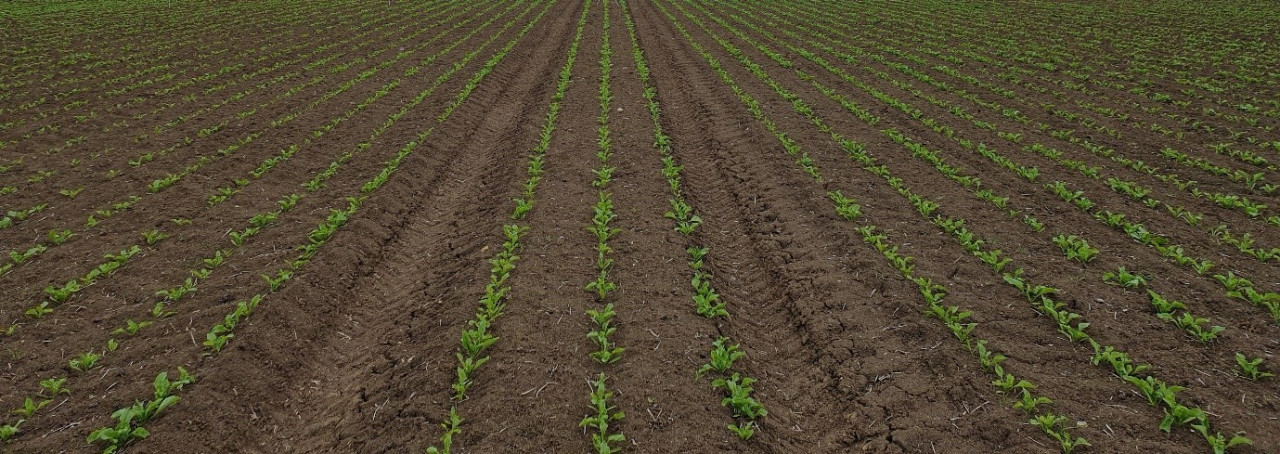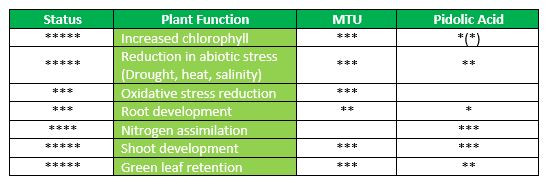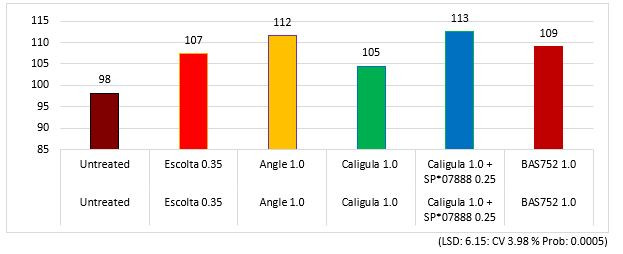Management of sugar beet to optimise yield
This season the spring weather has aided the establishment of good sugar beet plant populations, which is very positive for final yields. However, the average planting date was much later than we've experienced for many years. Importantly, crops have good potential but their management may need some adjustment from now until harvest to achieve optimum yields.
The majority of the national beet crop was planted in April although a lot of that was sown later in the month. Late planting means many crops are behind the canopy target (where they meet between the rows) for June. This is required for maximum light interception, which is when plant leaves use photosynthesis to provide energy for plant maintenance.
Despite the impact of wet weather in April, these later planted crops are now suffering the effects of developing drought conditions. Conversely, those crops planted earlier in the month are sitting in slumped soil because of the downpours soon after planting.
Thankfully, there are ways to manage these problems and mitigate the risk of them getting worse, mainly through biostimulants which encourage the natural plant growth process. In this blog, I will be going into more detail about the products available that can improve yield in sugar beet crops.
Use of Status
IntraCrop's Status is based on a new biostimulant urea derivative called 'MTU' [1-(2-methoxyethyl)-3-(1,2,3-thiadiazol-5yl)urea] which increases photosynthetic pigments in photosystems and as a result increases efficacy of photosynthesis. Interestingly, MTU also increases rooting.
Pidolic acid is in co-formulation and can be used as a complementary biostimulant to maintain nitrogen (N) under stressful conditions such as drought and heat. The combined biostimulant properties of Status are summarised in the table below.
Summary of biostimulant activities of Status (MTU + pidolic acid)
On-farm use has shown that Status has a wide application window on sugar beet crops. Applications at the establishment stage on around six to eight leaves influences root and shoot growth which increases nitrogen use efficiency (NUE). Maximum NUE helps crops get to full ground cover too. Full canopy applications in July and August help with green leaf retention, which increases the use of light and maintains yield building when beet may be stressed by drought and heat.
Managing soil slumping
The slowest growing crops are often badly affected by soil slumping. The fields affected were generally planted in the first half of April, with seedbed conditions suffering badly after heavy rainfall around mid-April. These plants have restricted rooting, with limited access to nitrogen and phosphate. Soils will start to re-open as they dry and beet root growth can be helped by application of biostimulants such as GroPlan P for increased rooting while applying additional phosphate and Nutrino Pro as crop-safe foliar N.
Virus yellows
Pressure from virus yellows has been low during establishment but this will likely change, as the hot weather will encourage peach-potato aphid (Myzus persicae) migration from over-wintering brassicas. My recommendation is you stay vigilant against virus yellows as it remains the most yield damaging disease. Many crops are around eight leaves at the moment and should only need an application of Teppeki to take them to adult plant resistance - around 16 leaves.
Looking ahead to autumn
Given the widespread late planting of beet crops in 2023, autumn yield building is becoming increasingly important when trying to achieve optimum yield. Crops usually lifted in October may need to be left until November to allow yield to build. This will increase the need for second and third sprays of fungicide programmes to protect yield from diseases such as rust and Cercospora, but also from the impacts of the frost crops suffered from in 2022.
Applications of the strobilurin fungicide are more beneficial to beet yield than SDHI fungicides, this has always been the case. The table below outlines results from a Frontier trial from 2021 and shows how effective strobilurin can be - beet yield was not impacted by virus yellows or severe drought. Angle (difenoconazole + azoxystrobin) out-yielded both SDHI alternatives and this has been the result in all Frontier comparisons of fungicides based on strobilurin or SDHI.
Summary
Despite a difficult start, sugar beet can still potentially be the most profitable crop in your rotation in 2023. It is a crop that is very resilient that has an increasing establishment period, which allows recovery from a less than ideal start. Careful management, with help from biostimulants and conventional chemistry from now until harvest, will allow your sugar beet crops to achieve top gross margins.
If you'd like help with any aspect of your sugar beet crop management, please speak to your local Frontier contact. Alternatively, you can get in touch.
As a subscriber, you’ll receive email alerts each time a new blog is published so you can always stay updated with the latest advice and insights from our experts







Comments